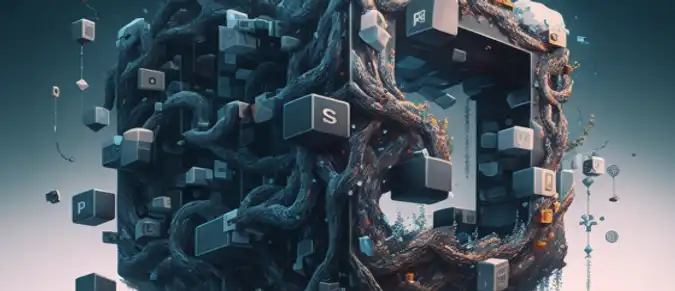Blockchain Layer 1 refers to the underlying protocol or network layer of a blockchain system. This layer is responsible for managing the consensus mechanism that validates transactions and maintains the integrity of the blockchain.
Layer 1 protocols provide the foundation for blockchain systems, and they typically include features such as:
-
Consensus mechanism: This is the algorithm that enables nodes in the network to agree on the validity of transactions and to add them to the blockchain.
-
Cryptography: This includes cryptographic algorithms such as hashing and digital signatures that provide security and privacy to the network.
-
Block structure: The structure of blocks in the blockchain, including the size and the number of transactions that can be included in each block.
-
Network protocol: The protocol used to communicate between nodes in the network and to propagate transactions and blocks.
Examples of Layer 1 blockchain protocols include Bitcoin, Ethereum, and Cardano. These protocols are designed to be decentralized, meaning that there is no central authority controlling the network. Instead, transactions are validated and added to the blockchain by a distributed network of nodes, each of which has a copy of the blockchain.
Advantages of Blockchain Layer 1:
Decentralization: The decentralized nature of Blockchain Layer 1 makes it more secure and resilient to attacks. There is no central point of failure, which reduces the risk of cyberattacks and data breaches.
Transparency: The transparent nature of the blockchain makes it possible for all participants to see all transactions. This promotes trust and accountability, and reduces the risk of fraud and corruption.
Immutability: Once a transaction is recorded on the blockchain, it cannot be altered or deleted. This ensures the integrity of the data and reduces the risk of errors or tampering.
Security: Blockchain Layer 1 uses advanced cryptographic algorithms to secure the network and protect the data. This makes it more secure than traditional centralized systems.
Scalability: Blockchain Layer 1 is designed to be highly scalable, meaning that it can handle a large number of transactions and users without compromising the security or performance of the network.
Disadvantages of Blockchain Layer 1:
Complexity: The complexity of blockchain technology can make it difficult for some people to understand and use. This can create barriers to adoption and limit its usefulness.
Energy consumption: Blockchain Layer 1 requires a large amount of computing power, which can lead to high energy consumption and environmental concerns.
Transaction speed: The decentralized nature of the blockchain can lead to slower transaction speeds compared to traditional centralized systems.
Cost: The cost of running a blockchain network can be high, which can limit its accessibility and adoption.
Governance: The decentralized nature of the blockchain can make it difficult to establish effective governance structures, which can lead to conflicts and disputes among participants.



